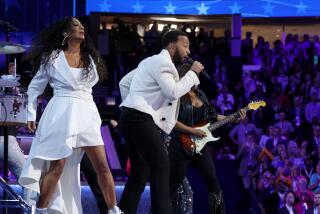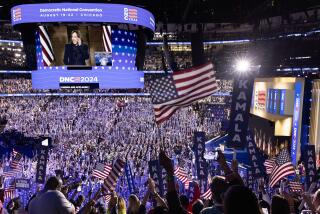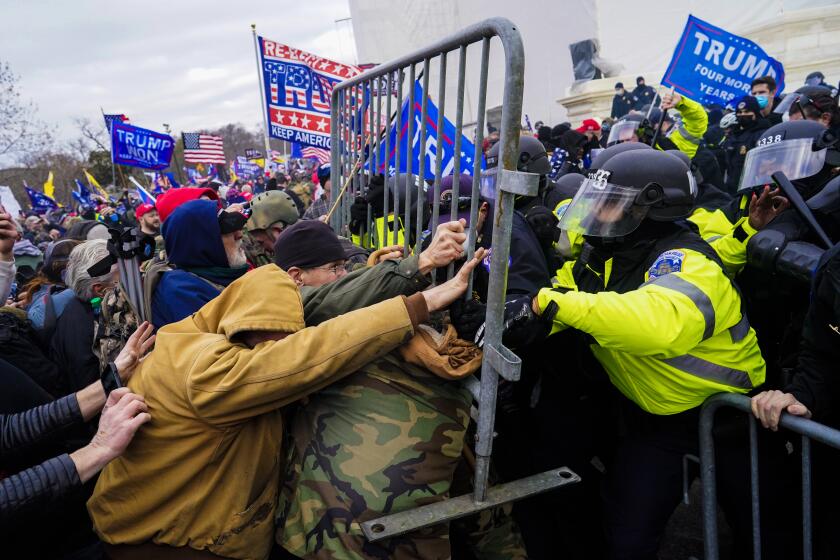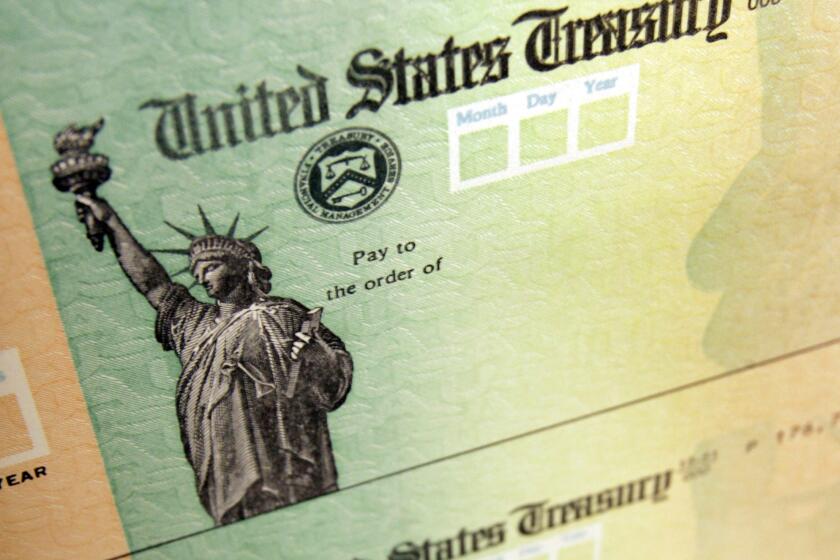Commentary : What the Democratic National Convention Was All About: Unity
- Share via
Let’s go Mike, let’s go Mike. . . . This chant personified the feeling of the 1988 Democratic Convention. But it was a feeling that was reached slowly, cautiously, and by some begrudgingly.
Most Californians arrived early because we know that California is the key to victory in November.
And since Orange County has about 10% of the population of California and more Democrats than any county other than Los Angeles and San Diego, we will be important players in the process.
In both of President Reagan’s campaigns, Orange County Democrats have been an important target. It is no accident that the Reagan campaign of 1984 was kicked off in Fountain Valley or that his last major appearance of that campaign was in Costa Mesa.
Democrats cross party lines more frequently than Republicans, so the basic strategy of Republicans is to get Democrats to vote for their candidate. Since the Democrats statewide outnumber the Republicans, all the Democrats have to do to win is to hold their own party members. That’s the challenge.
After a week in Atlanta I came away with the following impressions and conclusions:
- Many in the media did not seem to understand what the convention was all about. Gov. Michael S. Dukakis had won the nomination before the convention. So we were not in Atlanta to select the nominee but rather to formalize his selection, pull the party together and start the fall campaign. In years past, conventions had a different purpose. With the advent of presidential primaries, delegates are committed before they attend.
- The Democrats’ delegate selection process is much fairer than the Republicans’ because the delegates to the convention are in proportion to the percentage of votes that their candidate received in the presidential primary. For example, if Sen. Bob Dole had been in the Republican presidential primary in California and had received one vote less than Vice President George Bush, Dole would not have any delegates to the Republican Convention. This difference, in part, accounts for the early victory of Bush and is symbolic of the difference between the parties.
- Much was written and said about “parties” at the convention. I attended two. The delegates took their job very seriously, attended the sessions and were in Atlanta for a purpose. Most of the people that came to the convention were not delegates and I know there were some great parties for the press, lobbyists and political junkies who enjoy the social side of politics.
Some meetings that were called parties were really part of the political process. For example, as a director of the National Committee to Preserve Social Security and Medicare, I helped host a breakfast for Senate and congressional challengers. It was well attended and Jim and Mary Roosevelt were their usual charming selves while acting as principal host and hostess.
Parenthetically, I don’t think many Orange County residents are aware of the national stature that Jim Roosevelt enjoys or realize that his 4-million-plus-member organization is such a major force in national politics.
- From the opening to the last night, the convention was extremely well-organized and the people of Atlanta were wonderful.
Nor will I ever forget the children who led us in the Pledge of Allegiance and “The Star-Spangled Banner” on opening night; the tough, smiling good humor of Ann Richards in her keynote speech; the dedication and commitment of the Jesse Jackson delegates around me who during his speech kept saying, “teach us, teach us”; the agony of Gov. Bill Clinton who nominated Dukakis over the din of the delegates who would not settle down; Barbara Jordan and her impact on the convention when she seconded Sen. Lloyd Bentsen’s nomination; Jackson’s children, and, finally, the unexpected power and force of the Dukakis acceptance speech.
What he said, how he said it, and the reaction of all the delegates gave me a feeling of unity that I haven’t experienced since the 1984 Olympics.
More to Read
Get the L.A. Times Politics newsletter
Deeply reported insights into legislation, politics and policy from Sacramento, Washington and beyond. In your inbox twice per week.
You may occasionally receive promotional content from the Los Angeles Times.










